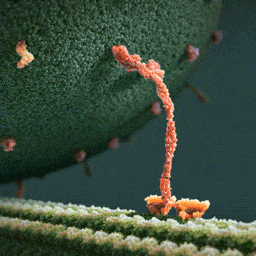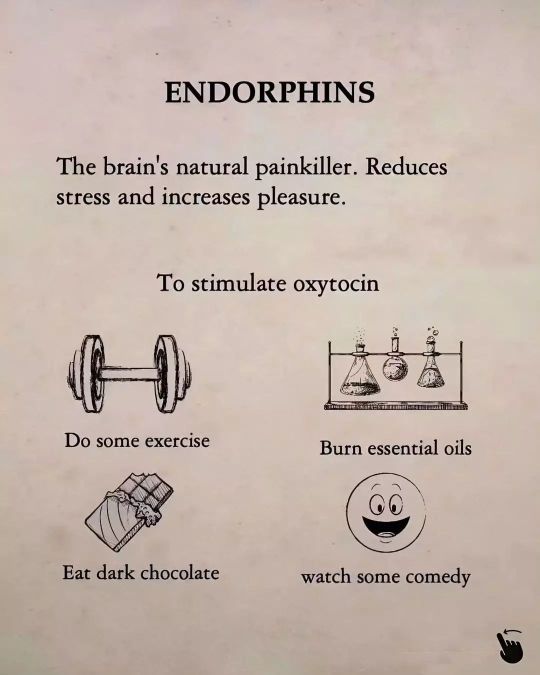#endorphins
Text

Garden time 🌼
#spnfanart#destiel#destiel fanart#castiel#dean winchester#wiggleart#pixel art#listen I had this idea going to bed last night#initially th3re was going to be animated butterflies but I decided I didn’t want to do that if I couldn’t animate#their hair moving in the breeze or some flowers moving#and I couldn’t figure it out right now#but also I like the idea of how gardening makes someone happy#and them just completely losing composure after an hour of gardening or something#ENDORPHINS#or it’s the shorts#either way
552 notes
·
View notes
Text

Happiness Chemicals
#manjiriayuveda#happiness#happymonday#happinesschemicals#happinesschallenge#neurotransmitter#serotinin#dopamine#oxytocin#endorphins#selfcare#healthyhabits#ayurveda canada#holistic healing#holistichealth#holistic food#gut health#digestion#healthy lifestyle#ayurveda#holistic health#healthyfood#sarnia healthcare#toronto ayurveda
711 notes
·
View notes
Text
I told you what hurt me and yet you did the same.
#quotes#sadgirl#sad poem#bpd problems#dead inside#borderline things#bpd#borderline personality disorder#love#love quotes#love poem#english#new post#endorphins#sad thoughts#depressing shit#love story#sad boy#you broke my fucking heart#broke my heart#lonelly#lovers#anixiety#missing#break me#my mind#overthinking
308 notes
·
View notes
Text

The image shows a myosin molecule carrying endorphin on a neuronal filament in the inner part of the parietal cortex of the brain.
1K notes
·
View notes
Text

Anne “Annie” Dorphins.
An A-list lounge singer that’s since had less appearances due to the lack of happiness in the Big Guy’s life.
123 notes
·
View notes
Text
Good morning!!!!!!
Up at first alarm ✔️ drank my water ✔️ ran ✔️

Coffee made ☕☕ Stretches done ✔️ protein shake drunk ✔️
Now for a shower and to kick ass at work!!
#Me!#NRC#Runners High#Endorphins#Upswing!#trying to make my motions/task done calmly. not channeling anxiety as motivation. it is tough. anxiety/excitement is very easy#happy though. and I think thay ia genuine.
53 notes
·
View notes
Text

209 notes
·
View notes
Text
"Here are 6 ways to regulate yourself using neuropsychology:
If you are stressed, use the physiological sigh. Huberman lab talks about it, but it’s essentially two inhales and one long exhale, and you do that over and over again.
If you are anxious, go for a walk. It deactivates your amygdala.
If you are sad, acknowledge your feelings and then move your body. it release endorphins.
If you are impulsive, like angry. You can’t think straight. Look out the window and don’t look at anything. Just like dilate your gaze. It blunts your neuroadrenaline so you can think clearly.
If you have low motivation, this is interesting ~ focus on one spot on your screen for one minute. Ignore everything else. Pupilary convergence increases focus.
And finally, if you’re feeling insecure, low self-worth, write down your strengths. Logical thinking overrides your limbic system."
~ Ana Del Castillo / Women's Rightness & Empowerment Expert
*
#stress#Body Alive#advice#wisdom#brain gym#emotions#felt sense#feelings#endorphins#bodymind#Ana Del Castillo#quotes
58 notes
·
View notes
Text
#if sad check this tag#tiktok#not my video#feel better#feel good#positive#positive vibes#positive thoughts#positivevibes#positivity#positiveenergy#cute#adorable#uplifting#serotonin#endorphins
452 notes
·
View notes
Text
I've been getting really into walking. This is very exciting for me because it's a path I strayed from.
I have a beautiful river 7 minutes from my home. It's been my river my whole live. It's where I learned to ice skate when I was 3. It's where I walked with my high school best friend and rode my bike with my first crush.
This river has my heart. It has seen me with my daughter when she was a toddler and the playground when she was older.
I've lived on both sides of this river. It's always been there, always within my realm of possibilities.
This river and I have renewed our relationship as I walk quickly, yet missing nothing of the nature around me. I see the diamond water sparkling around the geese, dazzling me. The endorphins in my brain are wiggling and dancing.
I feel all tension disappear from my body with each step. I breathe in the river around me as I crunch crunch along on the grass and gravel paths. I am alive. I am in my body. I feel amazing. Thank you, river.

12 notes
·
View notes
Text





lawofattractionlive
37 notes
·
View notes
Text
You showed me what Love is, and then You took away my hope for a Future.
#quotes#english#love#love quotes#borderline things#bpd problems#dead inside#sadgirl#sad poem#love poem#broke my heart#borderline personality disorder#actually borderline#actually bpd#anixiety#artists on tumblr#heartbreak#heartbroken#sad thoughts#depressing shit#love story#lonelly#lovers#endorphins#borderline blog#new post#hope#im done
23 notes
·
View notes
Note
I don't know, science? Test your blood for any of those love hormones or whatever that come out when one is in love?
You can measure the release of oxytocin in blood serum, which is the hormone of bonding and love. As well as other hormones that are also involved in relationships and bonding like endorphins (endogenous opioids, who doesn't love opioids?) and prolactin.
One could also use cerebrospinal fluid to measure endorphins, but that would be quite an unpleasant procedure.
However, who knows whether my endorphin levels could even be compared to normal base levels, given I used exogenous opioids or exorphins for years. They bind to the same receptors as endorphins, so who knows whatever I changed up there with all that.
#oxytocin or oxycodon which is better?#roleplay#rp#sherlock rp#sherlock roleplay#johnlock roleplay#sherlock holmes roleplay#johnlock rp#sherlock holmes rp#sherlock#bbc sherlock#sherlock holmes#johnlock#sherlock replies#sherlock holmes replies#science#endorphins#neuroscience#neurochemistry
8 notes
·
View notes
Text
The Science Behind Great Storytelling

(Photo by Pereanu Sebastian on Unsplash)
Why do you write?
There’s probably no easy, straightforward answer to such a question. Some people write to express themselves, some to share their stories or opinions, some to inspire other people, some to educate, some even find it therapeutic. It’s a question that has both no answer and multiple, complex answers, all at once — we all write different things, for different reasons.
Nonetheless, whatever your why might be, there’s a common denominator among them all: As writers and story-tellers, we aim to transform our why into written words, in order to elicit a certain array of feelings and emotions in our readers.
What we write certainly plays a big role here, but in my humble opinion, how we write it is what makes the difference: The way you describe a murder can make the whole scene go from tragedy to comedy; the way the reader feels about a character depends on the words you use while presenting it; different punctuation can give completely different meanings to the same sentence. In other words, by learning how to write you are able to control what your audience feels while reading your work — this is why learning, experimenting, and practicing are crucial steps towards great writing and story-telling.
No surprises here, right? Everyone knows the more you write, the more you learn, and the more you learn, the better you write. It’s the well-known practice makes perfect cycle that has repeated itself throughout history and, paired with talent, has churned out some of the greatest writers of all time.
So, I could tell you to practice everyday, to read more, or to join a writing course. I could also tell you that Jane Austen’s literary style relies on a combination of parody, burlesque, irony, free indirect speech, and a degree of realism. I could tell you how Hemingway stood out from the crowd thanks to his concise, straightforward, and realistic style. If we wanted to get even more technical, I could also tell you that Shakespeare used a metrical pattern consisting of lines of unrhymed iambic pentameter, called blank verse — in short, I could tell you things you’d find in your English literature book, or things you’ve already been told a million times before.
But that’s not what I’m going to do. Instead, I’ll tell you about the science behind our readers’ emotions, the effect our words have on them while reading, and how to make them work for you:
The science
It’s all about neurotransmitters.
Technically speaking, a neurotransmitter is “a chemical substance which is released at the end of a nerve fibre by the arrival of a nerve impulse and, by diffusing across the synapse or junction, effects the transfer of the impulse to another nerve fibre, a muscle fibre, or some other structure.”
In simple English, neurotransmitters are chemical messengers: To keep it simple, all you really need to know is that external stimuli get them fired up, and according to which one is stimulated, a certain chemical is released inside your body, provoking a certain feeling or emotion.
Unfortunately, since there are way too many different kinds of neurotransmitters, we won’t be able to cover them all here. If you are interested in the topic you can grab yourself a copy of Marco Nigrini’s book “The Brain: A User’s Manual” — reading the book, I came to the conclusion that, when it comes to writing and story-telling, there are three main neurotransmitters that we can exploit: Dopamine, Oxytocin, and Endorphins.
The storytelling
It’s still, all about neurotransmitters.
Dopamine
As Nigrini puts it in his book, “dopamine is the superstar of neurotransmitters”. You have most likely heard about it at some point in your life, and for a good reason. Most people know it as the pleasure and reward hormone, because it plays a major role when it comes to experiencing happiness, our well-being and that rewarding feeling we get after doing certain things — take social media for example: Instagram likes, Facebook messages, and Twitter retweets all stimulate the release of dopamine in our brain, which is why they all become so addictive.
For us, as writers and story-tellers, the addictive properties of dopamine are perfect if we want to keep our readers glued to our work. So the logical question now, would be how do we do it?
Suspense and expectation. These two elements alone are enough to flood your readers’ neural highways with dopamine, and get them hooked to your story — creating shorter sentences, revealing vital information that the characters don’t yet know, and building anticipation, are all simple yet effective ways to accomplish this.
Oxytocin
As writers, specially when it comes to fiction, we want our readers to fall in love with our story and our characters, we want them to bond with us and our work — this is where oxytocin steals the spotlight.
To give you an example of what exactly is this neurotransmitter’s role, imagine a mother and her newborn. As we all know, the bond between the two of them is pretty much unbreakable, but why is this? In part, it’s because of oxytocin — while nursing her newborn, oxytocin is released in large amounts, thus creating a sentiment of generosity and trust between the mother and the baby.
For obvious reasons, we can’t rely on nursing our readers, so we have to stick to the next best thing: In order to stimulate the release of oxytocin in our reader’s brain, we need to create empathic characters or narrate touching stories.
Endorphins
Chocolate and sex both release endorphins — this should give you at least a vague idea of the role they play in our body. To clear up what it is they actually do though, just know that, much like dopamine, these neurotransmitters have a massive impact on your feelings of well-being, and this is what we should take advantage of: If we give our readers a more immersive reading experience, while making them feel more at ease, comfortable, and relaxed (which are all effects that endorphins have on our body), chances are they will enjoy whatever it is we put in front of them.
The good news? Stimulating the release of endorphins in our readers is way easier than you’d think — just make them laugh.
Conclusion? As with every other aspect of life, the way we experience reading massively depends on the way our brain perceives and processes information. If we, as writers, are able to understand the mechanism behind it, we can get one step closer to mastering our craft.
So remember, use science and neurotransmitters to your advantage, and develop your writing according to the feelings and emotions you want your story to elicit in your readers.
#science#writing#article#information#people#neurotransmitters#dopamine#oxytocin#creativity#creator#writer#psychology#write#science backed#endorphins#storytelling#story#telling
7 notes
·
View notes
Text
Every time I don’t feel like working out ends up being exactly the right time to work out. Every time. Without fail.
But this time? I don’t know. I really don’t wanna.
6 notes
·
View notes
Text
Reason to Live #7966
The endorphin rush of completing a project and seeing hard work pay off.– Guest Submission
(Please don't add negative comments to these posts.)
#sad#help#hope#reason to live#depressed#depression#empty#alone#mental illness#anxiety#trauma#guest submission#mental health#endorphins#endorphin#rush#projects#completion#accomplishments#hard work#strength
57 notes
·
View notes